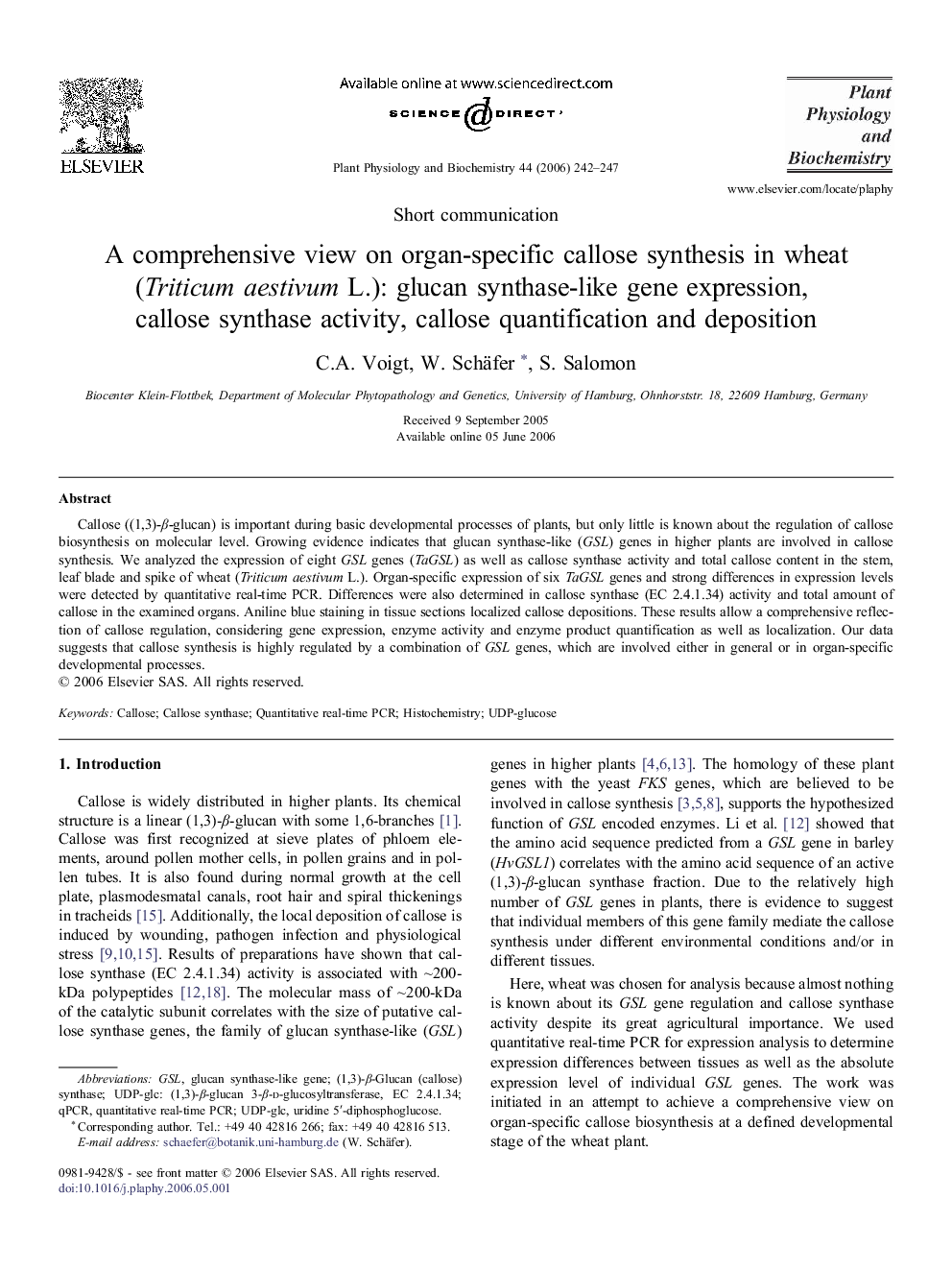| Article ID | Journal | Published Year | Pages | File Type |
|---|---|---|---|---|
| 2016877 | Plant Physiology and Biochemistry | 2006 | 6 Pages |
Abstract
Callose ((1,3)-β-glucan) is important during basic developmental processes of plants, but only little is known about the regulation of callose biosynthesis on molecular level. Growing evidence indicates that glucan synthase-like (GSL) genes in higher plants are involved in callose synthesis. We analyzed the expression of eight GSL genes (TaGSL) as well as callose synthase activity and total callose content in the stem, leaf blade and spike of wheat (Triticum aestivum L.). Organ-specific expression of six TaGSL genes and strong differences in expression levels were detected by quantitative real-time PCR. Differences were also determined in callose synthase (EC 2.4.1.34) activity and total amount of callose in the examined organs. Aniline blue staining in tissue sections localized callose depositions. These results allow a comprehensive reflection of callose regulation, considering gene expression, enzyme activity and enzyme product quantification as well as localization. Our data suggests that callose synthesis is highly regulated by a combination of GSL genes, which are involved either in general or in organ-specific developmental processes.
Keywords
Related Topics
Life Sciences
Agricultural and Biological Sciences
Plant Science
Authors
C.A. Voigt, W. Schäfer, S. Salomon,
